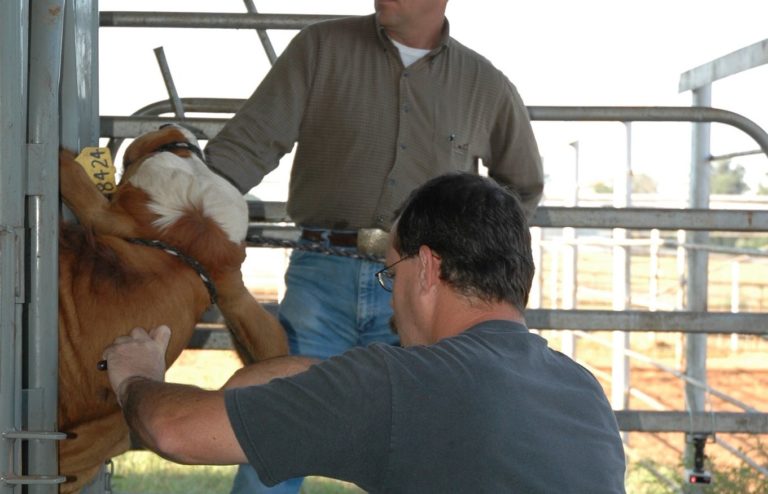All Antibiotics for Livestock Will Soon Require a Vet’s Prescription

[adning id=”33097″]

No longer will producers who need injectable antibiotics for their cattle be able to just grab them at their local feed store or order them online.
The Texas A&M AgriLife Extension Service wants producers to be aware that the U.S. Food and Drug Administration is continuing the phasing in of a law that requires a prescription for any antibiotic use in animals raised for human consumption, as well as for all companion animals.
Prescriptions, livestock and your vet
A prescription is already required for most antibiotics delivered to livestock, and the remaining three categories of injectable antibiotics available over-the-counter will soon be joining the list of medically important antimicrobials that require a veterinarian’s prescription.
“It will cause a little bit of difficulty because producers who want and need to use antibiotics are going to have to work with their beef cattle or livestock veterinarians and develop a veterinary client-patient relationship in advance of any disease issues,” said Joe Paschal, Ph.D., AgriLife Extension livestock specialist, Corpus Christi.
Paschal recommends producers should, if they haven’t already, develop a relationship with a local veterinarian to be prepared for these changes. People should also be aware that these laws apply to companion animals like horses.
“This means that your veterinarian knows who you are, knows the kind of livestock you are raising and what you are doing with them, understands your management, and that you agree if they come out to diagnose an illness and use an antimicrobial to treat a disease or illness, you will follow their directions including dosage, duration and withdrawal,” he said.
FDA rules and regulations
The FDA’s Center for Veterinary Medicine stated a two-year phase-in period would be allowed once the FDA Government Guidance document is finalized. A draft version is currently available online.
The FDA has had a law in place since 2017, which made most antibiotics administered to livestock by prescription only. These new guidelines further extend the need for veterinarian oversight by including the remaining injectable antibiotics.
“The amount of antibiotics used by agriculture has been dropping in recent years,” said Thomas Hairgrove, DVM, AgriLife Extension specialist, College Station. “The producers I’ve spoken with don’t seem concerned that these remaining injectables will now require a prescription too.”
After a peak in 2015, FDA studies show antibiotic use has declined. In 2017 alone, use of medically important antibiotics dropped 33%.
Tylosin, penicillin and tetracyclines are among some of the more popular antibiotics still available over the counter as injectables – for now. In 2018, the FDA published a five-year plan for phasing out all antibiotics without a veterinarian’s prescription. The plan should be fully implemented by 2023, although compliance is expected as soon as 2020.
Practicing good biosecurity
“In the long run, practicing good biosecurity, correctly diagnosing illnesses and the proper prescription of the right antibiotic may help shorten the incident of the disease, improve the productivity or return of the health of the animal, and reduce overall antibiotic use in livestock, pets and in humans,” said Paschal.
Since some antibiotics are used in both livestock and humans, the FDA’s concern is that antibiotic-resistant bacteria could develop more quickly from the widespread use of certain antibiotics that are medically important to humans – negatively affecting both humans and animals.
“Antibiotic resistance is not new, penicillin was discovered in the late 1920s and widely used in humans by the 1940s,” said Paschal. “By 1950, the first case of resistance was discovered in humans. This is a step in the right direction to protect these valuable compounds to prevent diseases.”
The greater the use of antibiotics, across all species, the greater the number of antibiotic-resistant bacteria or “superbugs” that can develop.
“Although the percentage of antibiotics used in agriculture is declining, we want to continue to use them judiciously and intelligently,” said Hairgrove. “Data shows ag is responding in a positive way, and I think our industry is doing a heck of a job.”
Article by Susan Himes, Texas A&M Agrilife Extension
[adning id=”33207″]
[adning id=”33207″]













